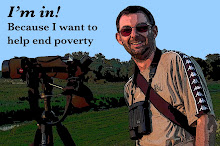More details here.
2014 birding holidays
More details here.
There and Back? A celebration of bird migration

Edited by Andy Brown & Michael Warren
The latest Langford Press ‘wildlife in art’ title looks at bird migration as a means to promote the ongoing slaughter of migrants on the Mediterranean island of Malta.
Thirty-nine authors have contributed written essays to accompany the array of fabulous artwork (more of which below). The essays provide individual insights in to different challenges facing the migrants themselves and those trying to conserve them. These contributions cover migration, including insects, from around the world with articles covering North America songbirds, Nearctic vagrants to Europe, many contributions from Europe (about 40% of the book) with a main section on Malta itself (20% of the book), Africa – the winter destination for most of Europe’s migrants, southern hemisphere seabirds and the UK – around a quarter of the book to our own islands looking at many different passage, summer and winter migrants. Within these I have contributed an essay on Lesvos highlighting the migration bonanza of the island, the continued occurrence of illegal poaching and the role of birding tourism. The essays themselves are all very different. It would have been easy to have edited these in to a house style, but their individuality compliments the individuality of the artwork and together they work in capturing the fascination we have with migration, the sheer joy of experiencing it, the perils faced by our migrant species and a clear ray of sunlight in our battle against the illegal hunting of them.
As good the essays are, they are however merely dressing for the main interest of this ‘art’ book. Thirty-nine artists have contributed artwork including some of my personal favourites (Carry Akroyd, Michael Warren, Greg Poole, Chris Rose – to name but a few). The mix of artists and their differing styles adds to the success of the book. I find that titles of this size can easily appear ‘samey’ if illustrated by a single artist. Using so many contributors allows each to shine in their own individual interest. Its not difficult to pick out some shining examples of this – Mike Henry’s sketches of Honey-buzzards, Greg Poole’s abstract pieces, Bruce Pearson’s Arctic sketches, Barry Van Dusen’s Neartic watercolours – I could easily go on. Singularly, many are fabulous, collectively this is an outstanding collection of works. And like many of the Langford Press titles, it’s a pleasure to simply pick up and dip in to every now and then, letting the artwork speak their individual stories as you flick through.
There are a few caption, typos and capitalization errors, but don’t let that detract from what is a magnificent celebration of bird migration and a title which easily compliments the many others in the Langford Press stable.
Top Birding Sites of Europe

New Holland, 2011 | Hbk, 192pp | inc. CD with vocalisations of 60 species | ISBN 978-1-84773-767-0 | £22.99
This new title comes hot on the heels of Dominic Couzen’s Top 100 Birding Sites of the World (2008) and following a similar format it covers 30 sites across Europe. These are chosen to represent the (author's) best birding sites across our continent and cover such well-known and long-time favourites such as North Norfolk, the Camargue in France and the Coto Doñana in Spain, as well as relatively new (in terms as accessibility) areas such as Svalbard in the Arctic. Including within the mix is Lesvos. I’ll review the book as a whole but use Lesvos as means to gauge accuracy (since I know a thing or two about the island!).
Each of the 30 sites are covered by their own chapters of six pages each which begin with a summary box which details habitat, key species and best time of year to visit. A written account of the site describes the main features, geographical background and more detailed information about the more interesting bird species to be found (including some interesting, and at times a little quirky, facts). Each chapter is illustrated with a number of, very often, sumptuous, colour photos showing landscapes, habitats and key birds of interest.
Each of the sites is ranked for birding quality, but this rank appears only once at the beginning of each site chapter – a list somewhere listing the sites 1 to 30 would have been interesting. Lesvos comes third (the Danube Delta and the Coto Doñana). Not bad!
Included with the book is a CD containing recordings of the calls and songs of 60 species – two for each site – for Lesvos this includes the two main specialties Krüper’s Nuthatch and Cinereous Bunting. I’m not sure how useful this will actually be for many readers as most of these can be easily found elsewhere (including the internet) for those who are really interested.
This book is not a detailed site guide, nor does it pretend to be. It’s aimed more at inspiring people to travel to new areas within Europe. In this respect it works brilliantly. Most of the sites will be familiar but putting them in a European context will allow those familiar with only a few of the sites to see how the other sites rank and therefore give some indication of comparable interest.
I know Lesvos intimately and have also visited the other Greek site included, Dadia Forest in north-east Greece. So, what did I make of these accounts.
Firstly, to keep calling these places 'sites' is a little misleading. They are ‘areas’ and in some instances pretty large ones (Lesvos itself covers 1630 sq. km). The text for Levos is very accurate and up to date – several references can only have come from my own recent writings. I could nick-pick that birders don’t stay in Kalloni (but Skala Kallonis) and referring to Kalloni as being in the ‘centre north’ when its pretty much bang in the centre, but as I stated above, this is a book to inspire and the text and accompanying photos (Rüppell’s Warbler, Krüper’s Nuthatch, Eleanora’s Falcon, Cinereous Bunting and Citrine Wagtail) certainly convey how wonderful the island is for migration and the handful of otherwise difficult-to-see species in a European context (e.g. Rüppell’s Warbler, Krüper’s Nuthatch, Cinereous Bunting).
Dadia Forest (ranked 26/30) on the Greek-Bulgarian-Turkish border, sneaks in to the book clearly because of its raptors – 36 species recorded of which 21 species breed, including the rare Black Vulture (I saw 22 species in the forest area in just three days in spring 2011). It is quite simply an outstanding area and if raptors are not enough, other residents of the Dadia-Lefkimi-Soufli forest include Olive-tree Warblers, Eastern Bonelli’s Warbler, Ortolan Bunting, Sombre Tit, Syrian Woodpecker, shrikes, flycatchers and much more. Plus, the Evros Delta (not in the book) is just 20km away and Lake Kerkini (also not in the book) is a couple of hours drive away – makes for a great birding holiday destination. Again, the text and photos convey just how fabulous this area is for raptors in particular. The CD includes tracks for Masked Shrike and Black-headed Bunting.
My only real criticism is the major omission of a ‘further reading’ section for each site (not just Lesvos or the Dadia Forest). Each site could have done with a list of key books for the area (e.g. any site guides covering the area, Lesvos being covered by my own A birdwatching guide to Lesvos and north-east Greece covered by Steve Mills’ Birdwatching in Northern Greece) and key websites – some areas, such as Lesvos, have dedicated websites full of detailed information for the visiting birder. I really can’t understand why such an obvious section was left out.
A major criticism of myself is that I haven’t visited anywhere near enough of the sites in the book!























